The Idea of JMS
JAGRUTHA MAHILA SANGHATANE (JMS) began as an idea of building a community led movement by Dalit Women in the year 1999. JMS was initiated as a small social experiment in and around an insignificant village called Pothnal in Manvi taluka of Raichur district in 1999. A small group of youth comprising those involved in Narmada Bachao Andolan (NBA), National Alliance of People’s Movements (NAPM) and others with exposure to several socio-political processes along with a few youth from the Dalit community initiated the processes of mobilising and organising Dalit Madiga women. Pothnal is located located at about 21 kms from the Manvi Taluka town and about 70 kms. from the district place.
Caste based violence, atrocities on Madiga Dalit women by other castes, domestic violence, the oppressive economic and social control by the powerful landlords who had the ownerwship of most of the agricultural lands where Dalits worked as bonded 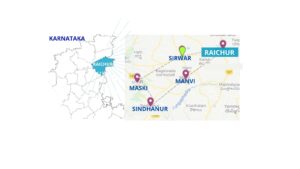 labourers in utter poverty and destitution, signalled Jagrutha Mahila Sanghatan’s journey for justice and dignity. The journey of JMS is a story of a social experiment aimed at catalysing thh birth of a grassroots Dalit women’s voice to resist and counter the hegemonies of caste, class and patriarchy. Over the years, JMS has become a symbol of resistance to oppression and also a symbol for the potential of creative energy of Dalit women to transform oppressive structures and to dream of a just and equitable soceity. This journey from being ‘unorganised Madiga women agricultural labourers’ to becoming Jagrutha Mahila Sanghatane(JMS), a Dalit Women Agricultural Labourers’ Collective, can be best described as a social experiment of confronting structures of injustices and of claiming dignity and justice. JMS thus became a symbol of Dalit women’s ownership and control over the very processes of this social experiment.
labourers in utter poverty and destitution, signalled Jagrutha Mahila Sanghatan’s journey for justice and dignity. The journey of JMS is a story of a social experiment aimed at catalysing thh birth of a grassroots Dalit women’s voice to resist and counter the hegemonies of caste, class and patriarchy. Over the years, JMS has become a symbol of resistance to oppression and also a symbol for the potential of creative energy of Dalit women to transform oppressive structures and to dream of a just and equitable soceity. This journey from being ‘unorganised Madiga women agricultural labourers’ to becoming Jagrutha Mahila Sanghatane(JMS), a Dalit Women Agricultural Labourers’ Collective, can be best described as a social experiment of confronting structures of injustices and of claiming dignity and justice. JMS thus became a symbol of Dalit women’s ownership and control over the very processes of this social experiment.
Referring to social movements and liberation of the oppressed masses, Late Baba Amte used to often say: ‘Sangharsh without nav-nirman is impotent, nirman without sangharsh is sterile’. Drawing inspiration from this, the two-pronged strategy guided this process – ‘sangharsh’ (struggle) for rights and ‘navnirman’ (reconstruction, re-creation) for dignity. The principles of social emancipation and liberation, propounded by Dr. B. R. Ambedkar guided the whole process – organise/collectivise, educate/conscientise and agitate/struggle. A firm belief and a commitment to the human right to life, liberty, dignity and equality has shaped the programmatic action of JMS through its campaigns for political, economic, social and cultural rights of Dalit women.
Through a process of social mobilisation and collectivisation, interrogation of the structures of oppression, Madiga women battled an uphill struggle for justice, equality and dignity using these strategies to confront the caste and gender based violence. The Dalit Madiga women have come a long way, from not having the space and the power to sit even for an hour at the sangha meetings in villages to entering the thresholds of gram panchayats, district offices and to be able to demand their entitlements, monitoring local public institutions such as primary health centres and anganwadis. JMS carved out its own identity through its collective power raising a collective voice against injustices and violence wherever and whenever possible. The human rights vision and work of JMS has also expanded to embrace other marginalised communities in the area and to show solidarity with all the struggling masses in the country.
Governance structure of JMS is in concentric circles:
Sanchalana Samiti (JMS Convener Committee)
This is the gist of the life of a poor Dalit Madiga woman who worked as an agricultural labourer at the turn of the second millennium – year 1999-2000.
The district of Raichur, with its feudal history of being part of Nizam state, provided a perfect context for the embodiment of caste-class-patriarchal mix resulting in violence on Dalit women and violation of their dignity within and outside homes. The districts of Nizam estate, which became part of the state of Karnataka, came to be known as ‘Hyderabad Karnataka’ region. It comprised Bidar, Gulbarga (now Kalburgi and Yadgir), Raichur (now Raichur and Koppal), Bellary (now Ballari and Vijayanagara) districts. In common perception, this region stood for the most backward region of the State of Karnataka, with despicable indicators in any sphere of human development. Occasionally, there was also a cry for a separate state and a demand for special status under the Constitution. In 2012, Hyderabad-Karnataka region was provided with a specail status under the article 371(J) of the Constitution of India.
Around the year 2000…
Raichur, the drought prone area of the deccan plateau,hailed as the rice bowl of Karnataka, was also home to the most marginalised communities in the state of Karnataka, viz. Dalit Madigas. A deadly combination of an entrenched caste system including extreme forms of untouchability and patriarchal values, combined with the practice of slave-labour with pittance of payments or no payment was socially enforced in Raichur with an iron hand, with repurcussions of social sanctions for any violation. Paradoxically, the feudal landlords who occupied the pyramid of political and social structures, belonged to the dominant Veerashaiva (Lingayats) community, who professed to be followers of Basava Dharma (Religion preached by Basaveshwara) which stood for a religion based on equality and social justice.
When the oppressed Dalits organised themselves, showed signs of resistance and dared to transgress the caste norms, boundaries and subjugation, they were dealt with severe cruetly and ruthlessness – women were stripped naked and paraded in the open,and not infrequently, the entire community was forced into submission through social and economic boycott. Emerging from these experiences of extreme caste-based oppression, Raichur became the cradle of Dalit liberation movement in early 1980s which was spearheaded by Prof. B. Krishnappa and was called the Dalit Sangharash Samiti (DSS). The DSS brought much hope of large-scale dalit mobilization, dalit assertion and liberation. However by 2000, it had splintered into several factions with hardly any presence of Dalit women in any one them. Rapes and molestations of Madiga women became merely symbolic, rallying points for caste identity when the sexual assault was by upper castes. The gender based discrimination and violence within Dalit communities and households was not even acknowledged! The triple burden and discrimination of imposed by the oppressive structures of caste – patriarchy – class heavily weighed on Dalit – Women – Agricultural Labourers.
The Birth of the Social Experiment
Such systemic oppression needed something more than slogans that one heard at the turn of the millennium. It was also a time, when several Dalit groups in the country were gearing up to put caste onto the global map of discrimination in the upcoming World Conference on Racism at Durban (South Africa), known as Durban Conference. It required processes of resistance and leadership to emerge from within theDalit community to confront patriarchal injustices suppressing women within households and the caste-gender based injustices unfolding in the larger societal structures.
At such a juncture, a small social experiment started in and around an insignificant village called Pothnal in Manvi taluk of Raichur district in 1999. Jagrutha Mahila Sanghatan (Conscientised Women’s Collective), catalysing the birth of a grassroots Dalit women’s voice to resist and counter the hegemonies of caste, class and patriarchy. The two-pronged strategy that guided the process was – ‘sangharsh’ (struggle) for rights and ‘navnirman’ (reconstruction, re-creation) for dignity.
The village by village meetings, formation of village units, nurturing leaderships, taking up local issues for building self-confidence, regular facilitation of sessions on social justice, human rights, confronting injustice, the knitting of various village communities into a larger collective for engaging with a system entrenched in caste and gender biased power relationships, emerged through various campaigns. Each incidence and manifestation of oppression and violence was converted into an opportunity for the collective of women to confront injustice by expressing public dissent, breaking silence and through public democratic protests. Through such engagement the name and identity of Jagrutha Mahila Sanghatane emerged. The JMS centre, near an abandoned temple of a Dalit goddess Kenchamma, was the original settlement of Dalit community in Pothnal. As the people had moved out of that flood prone place, it now emerged as the centre for action from 2004 onwards. About 12 women courageously came forward to work full time for the sanghatane in 2005. They stayed in different villages to mobilise communities and went home only once a week.
The journey gathered momentum when key women leaders themselves joined and took responsibility to continue mobilising communities for sangharsh, to confront all forms of social injustice. Some others engaged in reconstruction and re-creative work such as land development, organic farming, income generating ventures such as making terracotta articles and neem fertiliser. The focus on sangharsh and navnirman continued through campaigns such as right to work, right to health, right to food and nutrition, right to Dalit human rights and dignity, Citizen Rights Campaign, right to education and such other on-going and theme based campaigns. The campaigns and mobilisations for a life of dignity, broad-based the identity and reach of JMS from being the collective voice of Dalit Madiga Women to also being the voice of the struggling unorganised workers in general. In 2020, JMS also ushered in the process of the formation of construction workers’ union.
Historical Moments
The history of JMS is a journey where Dalit Madiga women took charge of their life to be active citizens rather than being passive and hapless victims. The sense of collective strength was experienced over 20 long years as a result of various landmark – historical struggles by Dalit Madiga women, numerous campaigns initiated by JMS for claiming spaces and rights and various paths they started to tread venturing into the unknown. Collective cultural celebrations in the dry summer which came to be known as ’ byasige habba ‘ (summer festival) became part of their local calendar. Chilipili School for children of Dalit community gained reputation in the district as the best residential bridge school. It meant for them a resolve to come out of the household and village confines, take to the streets and visit different places even beyond Raichur to explore newer paths and to move ahead even against odds and frustrations. The droughts induced migration, the devastation in the floods of 2009, lack of financial resources did not deter them from bouncing back. Some of the women organised themselves and got methodically introduced to be healers. With the reviving of traditional and local knowledge of herbs and healing processes, they have healed over 10,000 men and women of various ailments that included skin diseases, stroke, paralysis, anemia and the licke, that brought them recognition from different corners.
Struggles, Campaigns and Solidarity
Confronting caste and gender based violence was the primary motive that shaped the formation of Jagrutha Mahila Sanghatane. It’s core agenda was shaped by the principles of social justice, equity and commitment to human dignity. This meant breaking silence and foraying into public spaces and imagination whenever and wherever injustice to Dalit women came to light.
JMS women called for the first ever historic ‘Pothnal Bundh’ and ‘rasta roko’, protesting against the assault and nude-parade of Yerrama, a Dalit Madiga woman, in Vanenur village of neighbouring Bellary district in September 2001. This historic solidarity and massive public show of strength demanding justice for an unknown Dalit women in a distant village, in the early years of the formation of the collective, firmly established the identity of JMS and its future course. It is indelibly ingrained in the collective memory of Dalit women members of JMS.
Relentless struggles continued against all forms of violence and discrimination (domestic as well as caste based) against Dalit women, forcing the otherwise unresponsive and lethargic police and administrative machinery to Dalit women’s issues in Raichur district.Rooting out violence and discrimination, eventually got transformed into campaigns for claiming public spaces in public institutions by Dalit women: ‘nodi namma panchayat’ brought women into Gram Panchayats and gram sabhas (2002), ‘nodi namma prathamika aarogya kendra’ (primary health centres – 2003) introduced women to PHCs, ‘nodi namma nyaya bele angadi’ (PDS shops – 2004/05) introduced women to the idea of right to food security and their own entitlements. JMS was the first social organisation in Karnataka which translated the first orders of the Supreme Court of India on the Right to Food PIL into Kannada langauage and campaigned in 100 villages of Raichur district in 2005.
Larger Struggles and Solidarity for Social Justice
JMS led agricultural workers’ struggles to make it a labour movement of all subaltern communities during the prolonged years of drought (2001-2004) which included the struggle against harvesting machines resulting in a historic ban on the paddy harvesting machines in 2004-05. JMS extended solidarity to Dalit movements on issues of atrocities as well as demand for proportionate sub-reservation for Madigas (Madiga Meesalathi Horata Samiti) in Karnataka. At the national level JMS continued its solidarity with National Alliance of People’s Movements (NAPM), Narmada Bachao Andolan (NBA), People’s Health Movement (PHM), Right to Food Campaign, Pension Parishad, and many other social movements and campaigns.
Community Education for Liberation
Raichur district topped India in mid-90’s, in the number of child labourers! Caste oppression, feudal stranglehold and extreme poverty forced Dalit children to dropout of dysfunctional primary schools and pushed them into bonded labour or ‘jeeta padhati’ . Along wif JMS’ efforts to make schools accessible to Dalit children, Chilipili Child Labourers’ Special School began in the year 2000 in collaboration with the Central Labour Ministry. It was programmed as a bridge-school to wean out children from child labour and introduce them to literacy and then enrol them in the mainstream schools.
It began in Markamdinni village (about 12 kms from Pothnal) with the dream of confronting the systemic violence against young children and to restore their dignity. Initially, during 2000 – 2008, it was a day school which was run in the community centre (Ambedkar Bhavan) located within the Dalit community. The school moved to Thorandinni, Tadakal, Byagwat and Bagalwada villages during these years. From 2008-2015, it was recognised as a residential school and was located at the JMS centre (Pothnal). Overall, this initiative educated over 1000 Dalit boys and girls in equal number, most of whom were doing ‘pledged labour’ in the houses of upper castes and landlords.
Chilipili shale went beyond literacy and the educational curriculum to be a school of life and learning where dalit children learnt to live together, respecting each others’ spaces and boundaries. Most of them were over 9 years old and totally unfamiliar wif the written word or numerals. However, with two years of intensive facilitation most of them enrolled in the 5th or 6th standard while some exceptionally talented children enrolled in 7th and even 8th standard in mainstream school. Most of them cruised ahead of the other privileged children in their schools to become leaders. Renuka, one such girl from Tadakal village, even brought laurels to the district by scoring 78% in 10th Standard. Several children continued to complete their graduation, post-graduation and professional training as primary and secondary teachers. Several others, started their career as anganwadi teachers, police constable, and some prepared themselves for the competitive exams such as Karnataka Administrative Services.
The quality of the work, dedication of teachers and ownership of children over the Chilipili School tested JMS’ resolve to negotiate with a sponsoring government programme (National child labour programme) without giving bribe for 15 long years! Chilipili School, was JMS’ investment for the future of Dalit community.
Reconstruction Activities
Working with the most marginalised, landless, Dalit, women and agricultural wage labourers implied that it was literally the most resourceless community one could think of! Therefore the challenges confronted during ‘navnirman’or reconstruction activities had no answers in the text books of social work in the universities. Walking the untrodden path the women learnt by doing, by trial and error as and when they confronted a situation. Women learnt a range of skills- preparing incense sticks, tailoring, embroidery, preparing organic pesticides , organic cultivation of paddy and pulses, community land development, vermi compost, herbal medicines, making terracotta articles, neem fertiliser and so on. The list of trials is quite long. This also meant that women had to firmly believe in a process that was unfamiliar and invest their time in it with a hope that returns would come soon. Theinitiatives which survived the test of time and persistence, got consolidated under the banner of CHIGURU ENTERPRISES and consisted of terracotta jewellery, herbal medicines unit and neem fertilisers.
The experiment was also with the process of building ownership and control over the processes of production and decision making. The terracotta unit led by a group of women from Pothnal village, neem fertiliser unit led by group of women from Muddanaguddi village and herbal medicine unit consisting of health workers across the villages grew as autonomous units with total control and ownership of the entire process. The colours of terracotta jewellery have reached far and wide, the healing touch of the herbal medicines have yielded miraculous results for paralysis, leucoderma and skin diseases, and the neem fertiliser has been certified by local farmers for its quality. The CHIGURU enterprise has won awards for women for enterprise and leadership. Women’s perseverance against all odds survived 20 years. The vagaries and challenges of market have affected them and the economic returns. However, amidst the ups and downs, the old leadership seeks younger more educated comrades to join the sanghatan to expand its scope to meet new challenges in dalit madiga women’s struggle for equality, dignity and justice.
Awards and recognition
Awards recognising their journey and struggle came their way at various intervals – and included Citigroup National Award for community venture of neem fertiliser (2006), Community Leadership Award by Karnataka state government and an award for Community Leadership by the National Commission for Women (2013). The individual leaders have been locally recognised for their work as committed social change makers.
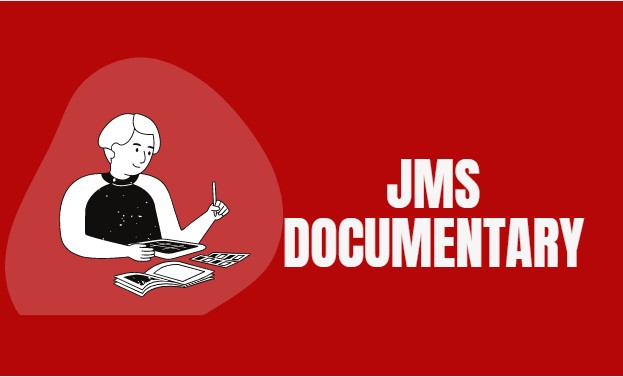
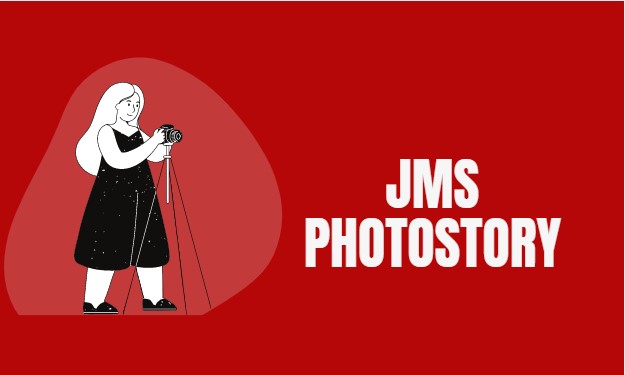
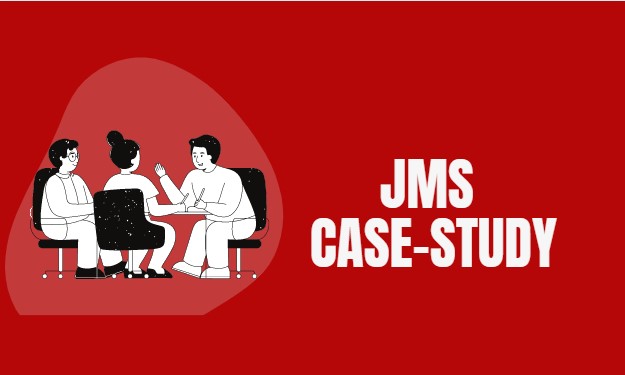
The journey of liberation is long and the struggle is yet to be decisive. With great humility, JMS do hopesthat the sparks of this small social experiment, will continue to inspire many more to keep the gaze steady on the horizons of new dreams. JMS continues to struggle to keep its heads high and feet firm, even while stumbling through the maze and mess that surrounds the lives of Dalit Women even today!
The team JMS pays tribute to hundreds of Dalit Madiga Women who reposed faith in this process of sangharsh and navnirman and became instrumental in claiming their legitimate respect and dignity. They have placed JMS in the state, national and even global canvass of meaningful human development work.
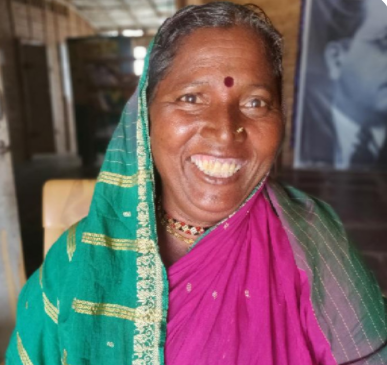

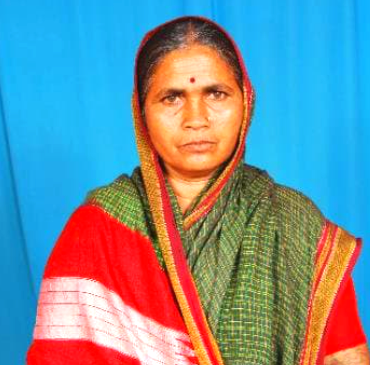
JMS need helping hands to do more work on empowerment of Dalit Women.
©2020 JMS All Rights Reserved.
Site Developed by Creative Communication